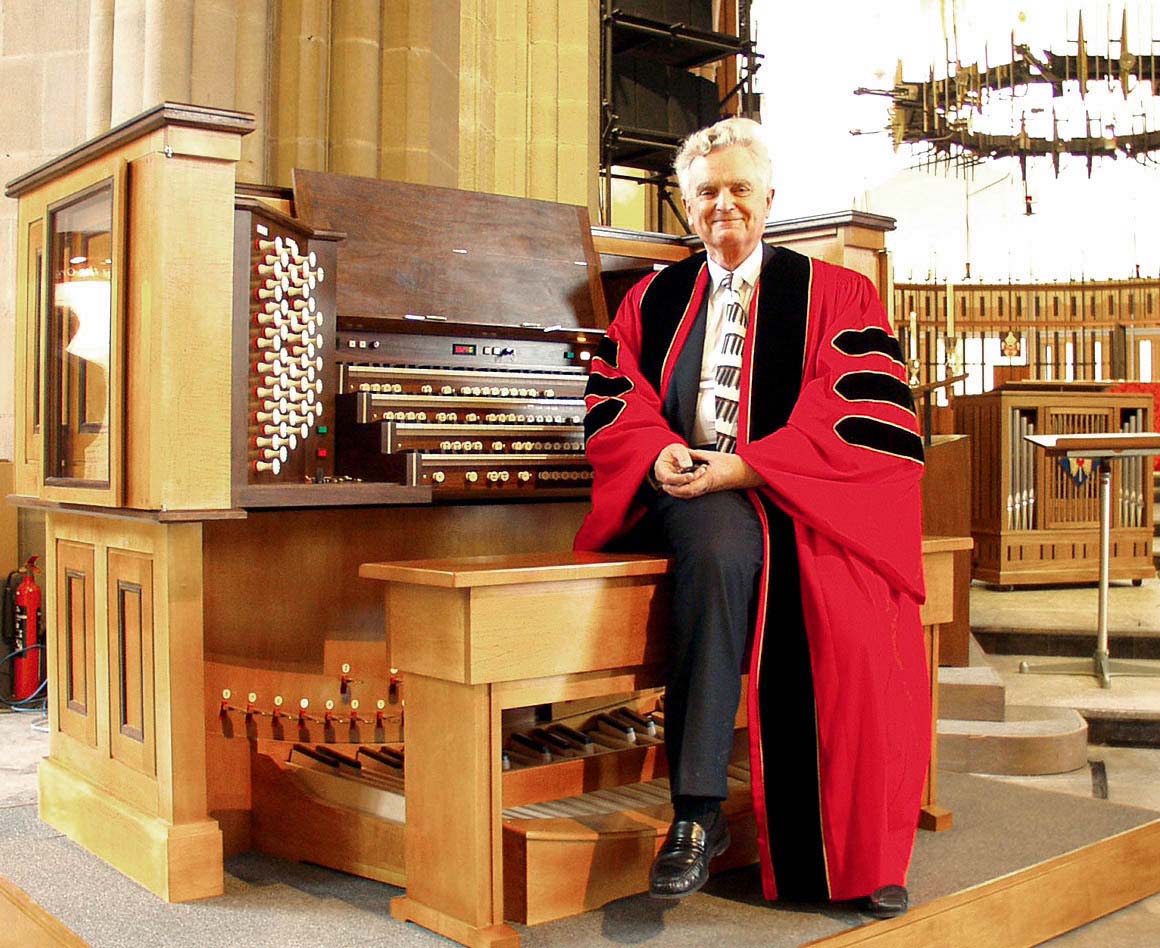How to transform your choir
and fill your stalls
with enthusiastic singers
17 Ten Commandments which we all know –
but do we follow them?

by Dr John Bertalot
Organist Emeritus, St Matthew's Church, Northampton
Cathedral Organist Emeritus, Blackburn Cathedral
Director of Music Emeritus, Trinity Episcopal Church, Princeton, NJ, USA
1 Do your homework.

If you expect your choir to learn from you tonight, you must know exactly what it is you want to teach them. So, play the music through on the piano beforehand so that you can quickly spot wrong notes; mark your scores where singers should breathe, and decide in which order you will rehearse the music so that you can look forward confidently to leading a dynamic and worthwhile rehearsal.
2 If you want your choir to arrive punctually, you need to arrive 30 minutes early yourself to prepare your practice room and to greet them.

A choir is as much a social group as a singing group. Therefore interact with them socially before they start singing.
3 Your singers want to belong to an efficient choir. Therefore be efficient yourself:

Start exactly on time, finish exactly on time, make all your instructions positive.
Better still, get them to tell you what you want to tell them – that way, they’ll remember to do it on Sunday:
Did we start together? Take a breath exactly one beat before you start.
Did we finish together? Watch me!
Did we all stand together? Let’s try it again.
Are we really singing together in that passage?
Is that too loud or too soft? What does that dynamic tell us to do?
Are we sharp or flat?
There was a wrong note in the tenors – which one was it? Let’s sing that one note correctly, then practise getting to it. (There’s no such thing as a difficult note – in singing or in playing. The difficulty lies in getting to that note. So practise the ‘getting to’.)
Is that rhythm really correct? Let’s say the words in rhythm – then sing them.
What’s this anthem about? Is the message of the words coming through?
Which is the important word in that phrase? Let’s crescendo towards it and diminuendo away from it. (That will help to bring out the meaning of the text as well as to make your singing more musical.)
I can’t understand the words in that passage. Which letter are you missing out? (It’s usually the letter ‘d’.)
Which word did you breathe after? Which word shouldn’t you breathe after? (Same answer!) So where should you breathe? Let’s do it.
Are we singing in balance? Sustain that first chord and listen to each other. (Listening to each other is a sure way to achieve blend and balance very quickly.)
Show me how you should be standing/sitting to sing! (They know that their stance should be better – they’ve ‘got away with it’ so far!)
4 When you ask your choir to correct a fault, almost certainly not everyone will get it right first time. Therefore, invariably, you’ll need to ask them to do it again – and even for a third time. (Focus on one particular issue for each repeat, such as, (i) Let’s breathe together, (ii) Did everyone breathe together? (iii) Some of you are scooping onto that note. Let’s sing it dead centre.) That way you’ll be raising their standards immediately, and they’ll love you for it.
5 Get away from the organ or piano during your practice.

Let them sing a lot unaccompanied – this will help them to become self-reliant. Walk amongst your choir as they sing – the nearer you stand to them the more they will be challenged to try harder.
6 Do they really listen to your instructions?

Do they really listen when you play a chord? If not, wait until there is silence and then speak (or play the chord – just once). Never speak to your singers when someone else is talking; that will give the message that what you’re saying isn’t really worth listening to! Is everything you say worth listening to? If not, don’t say it!
7 When you conduct your choir, do you look at your singers or is your head firmly in your copy?

If you think that you do look at your singers, almost certainly you are not. 95% of the choral conductors I’ve observed have their heads in their copies. Many think that they are looking at their singers – they may well do so just before they start, but as soon as they beat the first note, their heads immediately go to their copy. You only communicate with people when you look at them!
8 Does your choir sing with your beat or after your beat? Again, 95% of choral conductors I’ve watched let their choirs sing after their beat but the conductors don’t realize it! The way to correct this is to say, ‘No, sing that first chord with my beat!’ And you’ll have to do this at least three times before they get the message. Don’t make the mistake of beating more vigorously to bring them in. (‘If he wants to kill himself, let him!’) No! Insist that they work harder!
9 Even though you may give your instructions clearly and even though every singer seems to be listening to you, it’s surprising how many singers are not wholly ‘on board’ with you. So after you’ve given an instruction to improve a passage, ask them ‘Why are we singing this again?’ You’ll be amazed to discover how many of your singers don’t know! (This will make you try harder as well as them!)
10 Throughout your practice, ask yourself, ‘Am I making this rehearsal worth the while of my singers to leave the comfort of their homes to be with me? Will they say, “We did enjoy that, and can’t wait until next week!”’ If the answer’s No – ask yourself why. If you want your singers to work harder for you, you’ll have to work harder for them!
Did you really do your homework?
© John Bertalot, Blackburn 2013






















